Key takeaways
- GraphQL allows precise data fetching through a defined schema, reducing over-fetching and under-fetching common in REST APIs.
- The single endpoint design simplifies architecture, making testing and debugging easier compared to managing multiple URLs.
- GraphQL’s strong type system and introspection features enhance development efficiency by catching errors early and serving as self-documenting APIs.
- Implementing query depth limits and robust error handling is crucial for balancing security and performance in a GraphQL environment.

Understanding GraphQL Basics
When I first encountered GraphQL, what struck me was its elegant approach to data fetching. Unlike REST, where you might over-fetch or under-fetch data, GraphQL lets you ask for exactly what you need—and nothing more. Have you ever felt frustrated retrieving too much unnecessary information just to get a single piece of data? That’s where GraphQL changes the game.
At its core, GraphQL is all about defining a schema that describes your API’s types and how they connect. I found this concept refreshing because it makes the API more predictable and self-explanatory. The schema acts like a contract between the client and server, ensuring we’re always on the same page.
One thing I appreciate about GraphQL is its single endpoint design. Instead of juggling multiple URLs, all queries and mutations go through one gateway. This approach simplifies the architecture and, honestly, makes testing and debugging a bit less stressful. Have you tried tracing your requests across dozens of endpoints? With GraphQL, that hassle diminishes significantly.
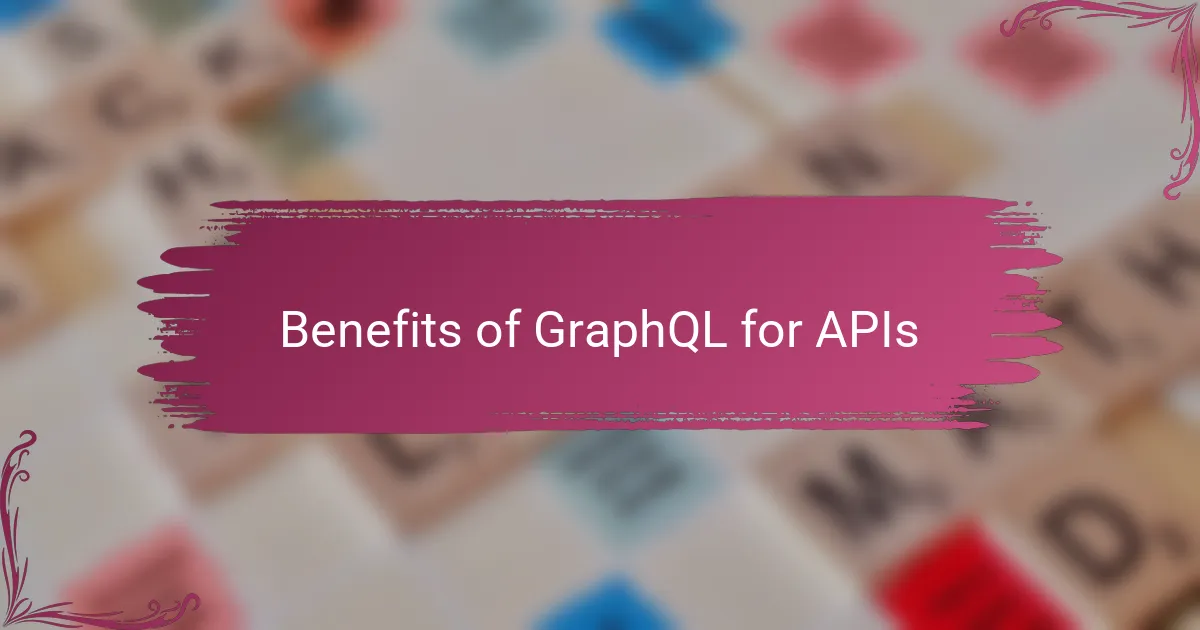
Benefits of GraphQL for APIs
What I really love about GraphQL is how it boosts efficiency by letting clients request precisely the data they need. This means fewer network requests and less wasted bandwidth. Have you ever noticed how frustrating it is when your app loads slowly because it’s fetching tons of unused data? GraphQL helps avoid that bottleneck.
Another neat benefit is its strong type system, which caught my attention during my early projects. It acts like a safety net, catching mistakes early before they turn into bugs in production. From my experience, this makes development smoother and debugging less of a headache.
And here’s something I often reflect on: GraphQL’s introspection feature makes APIs self-documenting. I remember how much time I used to waste digging through outdated docs. With GraphQL, the schema itself serves as a live guide, which feels like having a built-in assistant while coding. Isn’t that just a relief?
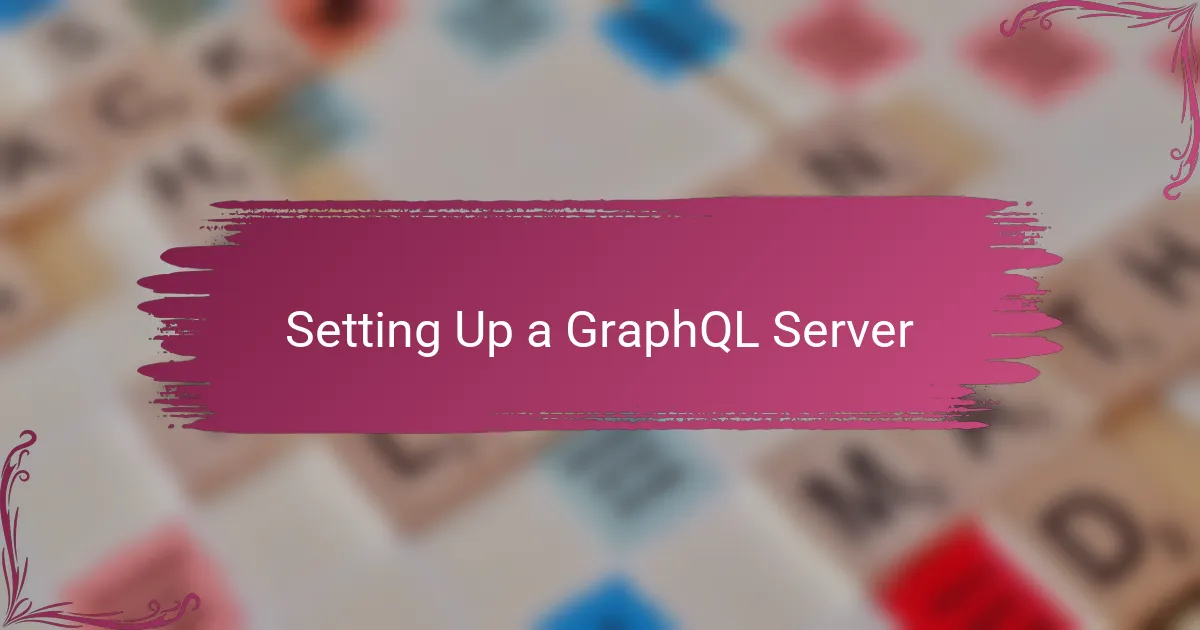
Setting Up a GraphQL Server
Setting up a GraphQL server initially felt a bit intimidating to me, mainly because it involves defining a precise schema and resolvers. But once I broke it down into smaller steps—starting with installing a server library like Apollo Server and writing a basic schema—the process suddenly became manageable and even enjoyable. Have you ever experienced that “aha” moment when complex tasks become surprisingly straightforward? That’s exactly what happened for me here.
One thing I quickly learned is how crucial it is to structure your type definitions clearly. When I didn’t, debugging queries was like navigating a maze with no map, which was frustrating. After refining my schema, requests started working predictably, and I could easily expand the server’s capabilities with confidence. It really paid off to spend extra time upfront rather than rushing through setup.
Connecting the server to data sources felt like the final piece of the puzzle. I recall struggling a bit with writing resolver functions that fetch data correctly, especially when juggling multiple databases or REST endpoints. However, once I got the hang of resolvers as simple functions translating queries into data calls, building complex queries became more natural—and that’s when I truly appreciated GraphQL’s power. Have you noticed how the right mental model can make development flow smoother? This was mine.
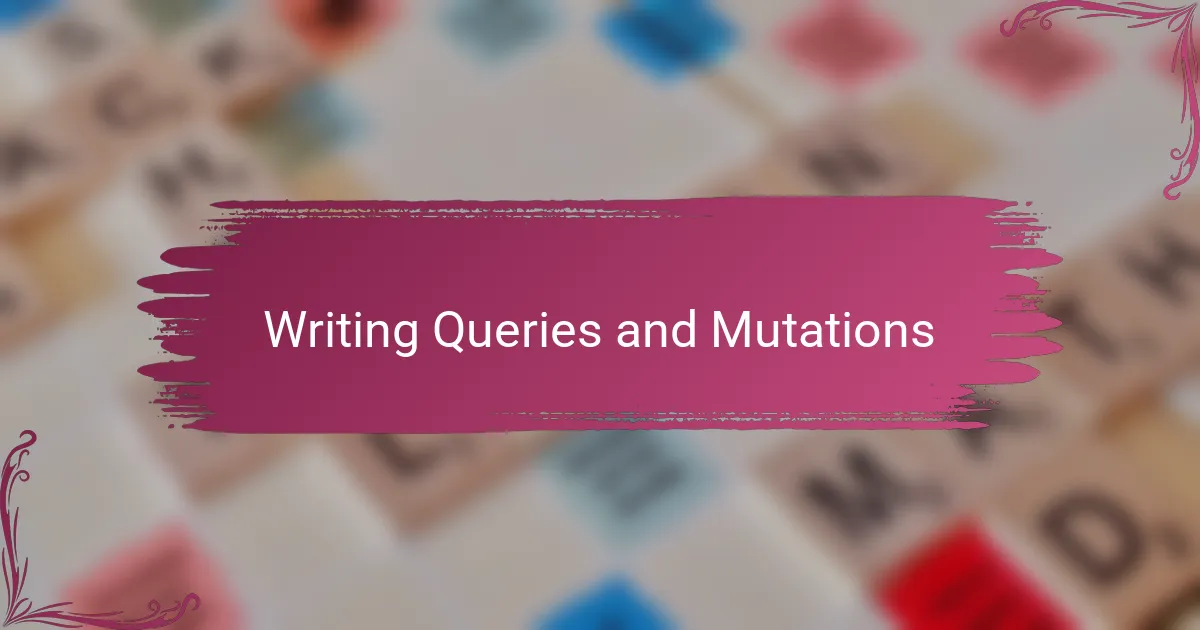
Writing Queries and Mutations
Writing queries in GraphQL took me some time to get comfortable with because, unlike REST, you write exactly what you want from the server in a nested, intuitive structure. At first, I found myself wondering if I was overcomplicating things by specifying every field, but soon enough, I saw how this precision made responses cleaner and faster.
Mutations felt a bit trickier since they involve changing data rather than just fetching it. I remember hesitating before my first mutation, worried about side effects or unintended overwrites, but defining clear input types and return payloads quickly eased those concerns. Have you ever had that moment when writing a mutation and realizing how straightforward it can be once you grasp the pattern?
What really helped me was thinking of queries as questions and mutations as requests for action, which made the syntax feel almost conversational. By naming operations thoughtfully and using variables, I avoided messy hardcoding and made my API interactions more readable and maintainable. Isn’t it satisfying when your queries and mutations start to feel like a natural part of your coding workflow?
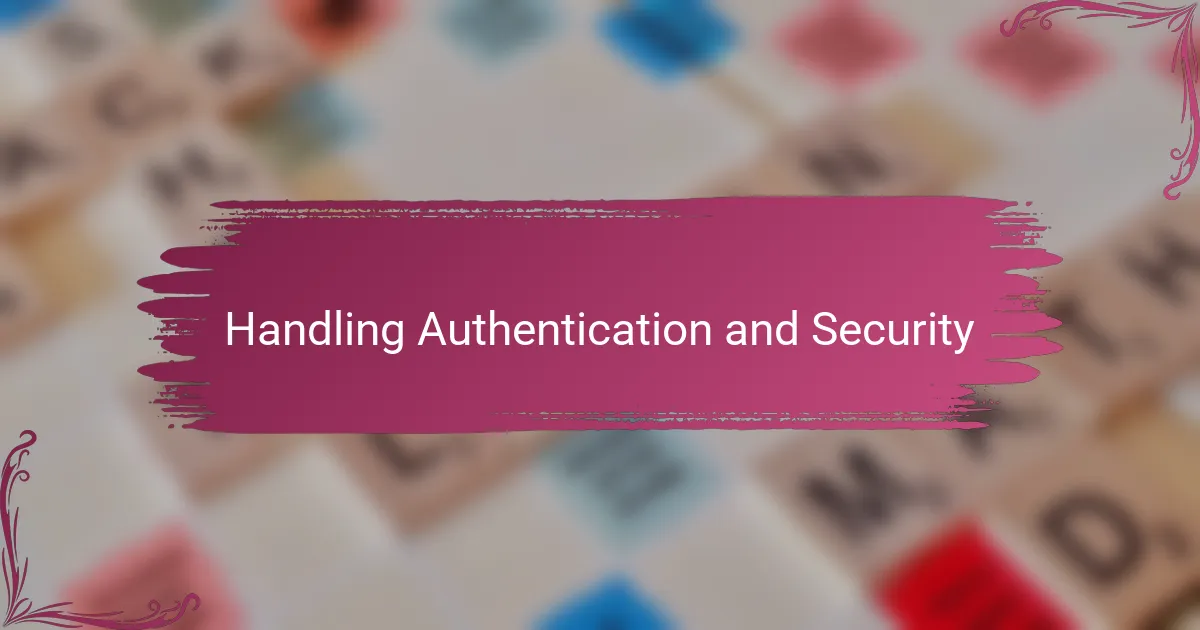
Handling Authentication and Security
One thing that caught my attention early on is how GraphQL handles authentication differently compared to REST. Instead of relying on multiple endpoints for login or token refresh, you typically manage authentication through a middleware layer that secures the single GraphQL endpoint. Have you ever worried about exposing sensitive data through overly permissive APIs? From my experience, setting up this gatekeeper properly is essential to keep your data safe.
Another aspect I found intriguing is how you can tailor access control right down to the field level within your resolvers. This granularity means you can decide who sees what, even within the same query, which feels empowering but also a bit complex. When I first tried implementing role-based access control here, it took some trial and error, but once I understood the pattern, it became an effective way to protect sensitive information without sacrificing flexibility.
Of course, securing a GraphQL API isn’t only about authentication — it’s also about stopping malicious queries. I’ve learned to set query depth limits and rate limiting to prevent denial-of-service attacks caused by overly expensive requests. Have you ever faced the challenge of balancing security with user experience? Applying these safeguards helped me strike that balance by protecting the server while still enabling rich, efficient queries.

Common Challenges and Solutions
Dealing with the complexity of GraphQL schemas was one of the first hurdles I faced. At times, it felt like trying to piece together a jigsaw puzzle without the picture on the box. But breaking the schema into smaller, modular parts made it much easier to manage and debug. Have you ever found that tackling a big problem in chunks suddenly makes it less intimidating? That was my go-to approach here.
Another challenge that caught me off guard was optimizing query performance. Since GraphQL lets clients request nested data freely, it’s easy to create expensive queries that strain your backend. I learned to implement query depth limits and complexity scoring, which helped me keep performance predictable without completely restricting flexibility. It’s a bit like setting boundaries that protect your system without suffocating creativity.
Lastly, I struggled initially with error handling in GraphQL responses. Unlike REST’s familiar status codes, GraphQL bundles errors within the response body, which can be confusing at first. But once I adapted my client-side logic to parse and display errors gracefully, the user experience improved significantly. What’s your experience been like catching and communicating errors in APIs? For me, mastering this has been crucial in building robust applications.
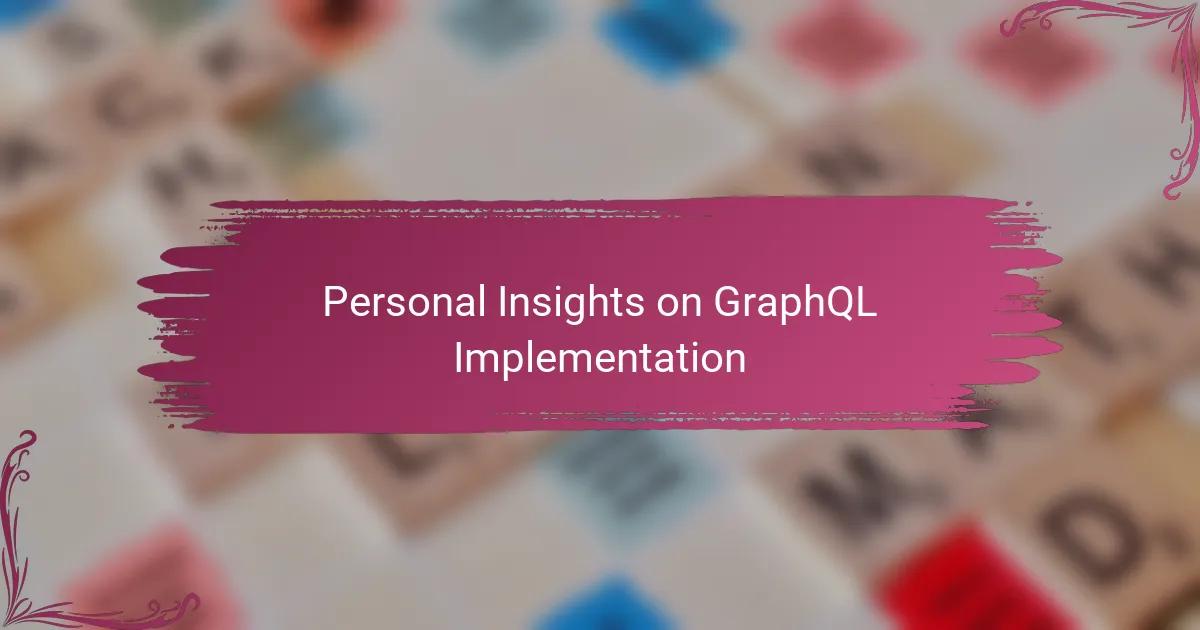
Personal Insights on GraphQL Implementation
Implementing GraphQL felt like stepping into a new world where control over data requests suddenly made sense to me. I remember struggling at first to balance the freedom it offers with the discipline needed to maintain a clear schema. Have you ever felt both excited and overwhelmed by a tool’s power? That’s exactly how GraphQL hit me.
One insight I treasure is how crucial early planning is. Without a thoughtful design of your types and relationships, you can quickly end up with a tangled API that’s hard to maintain or expand. I learned the hard way that investing time upfront saves a lot of headaches later—and it made adding features feel more like building blocks than patchwork.
Lastly, I’ve come to appreciate how flexible yet demanding GraphQL can be regarding security and performance. It pushed me to become more intentional about access control and query limits. Have you noticed how these challenges force you to grow as a developer? Tackling them head-on transformed my approach to API design in ways REST never did.